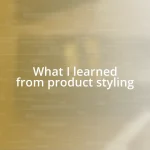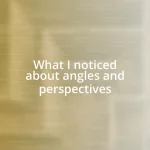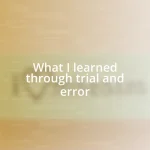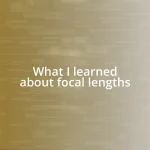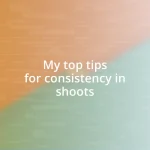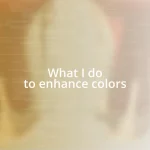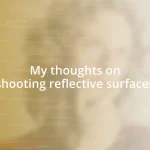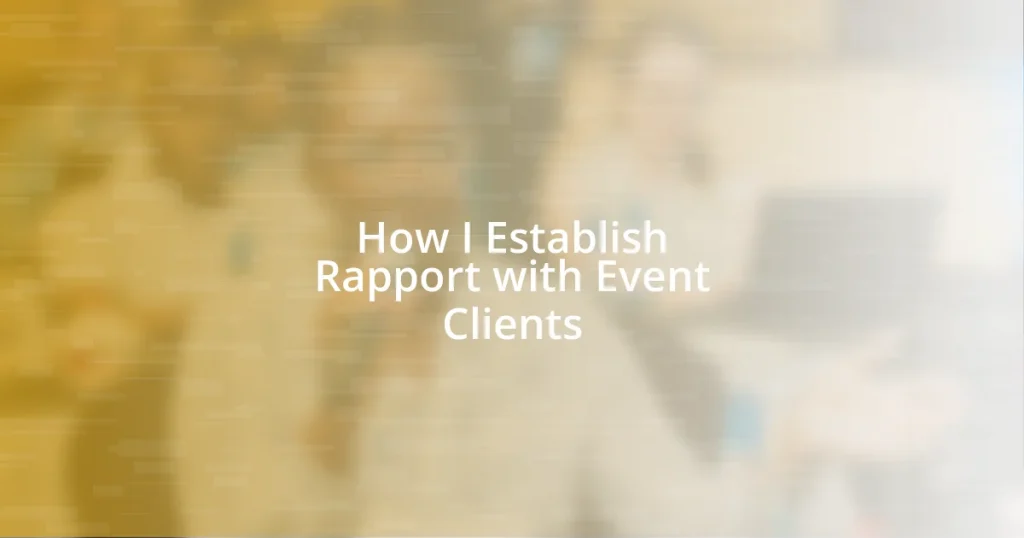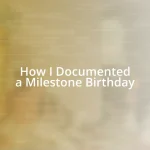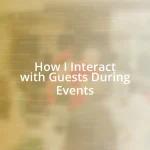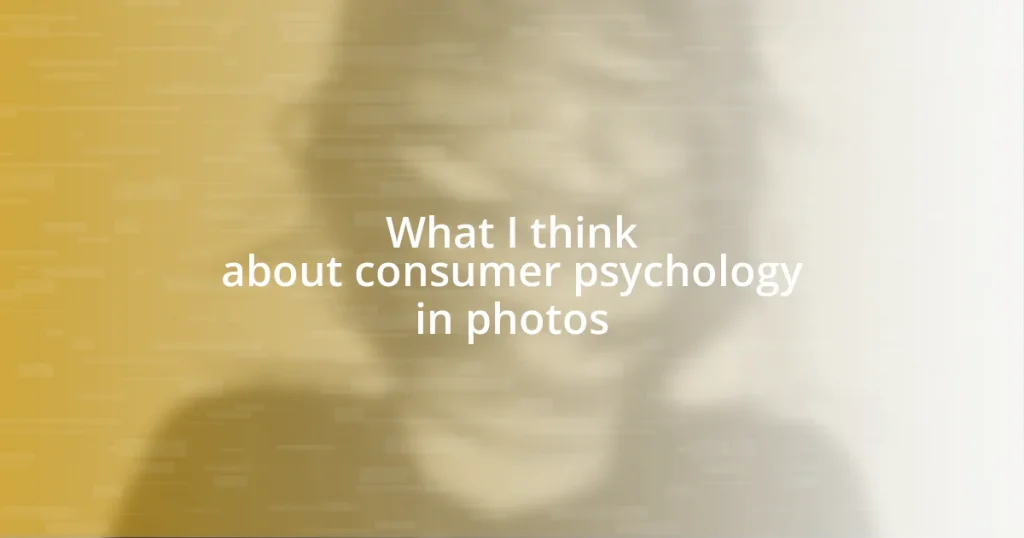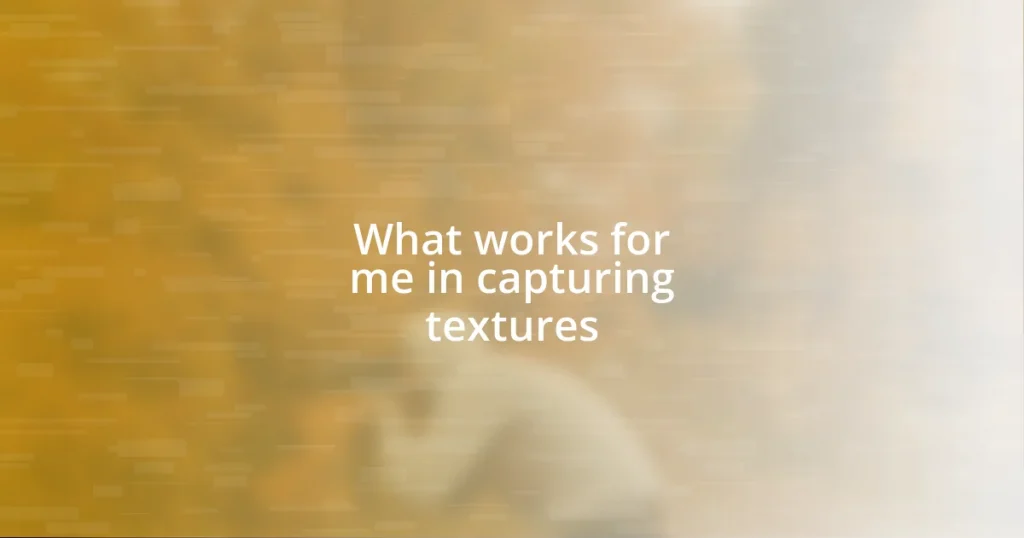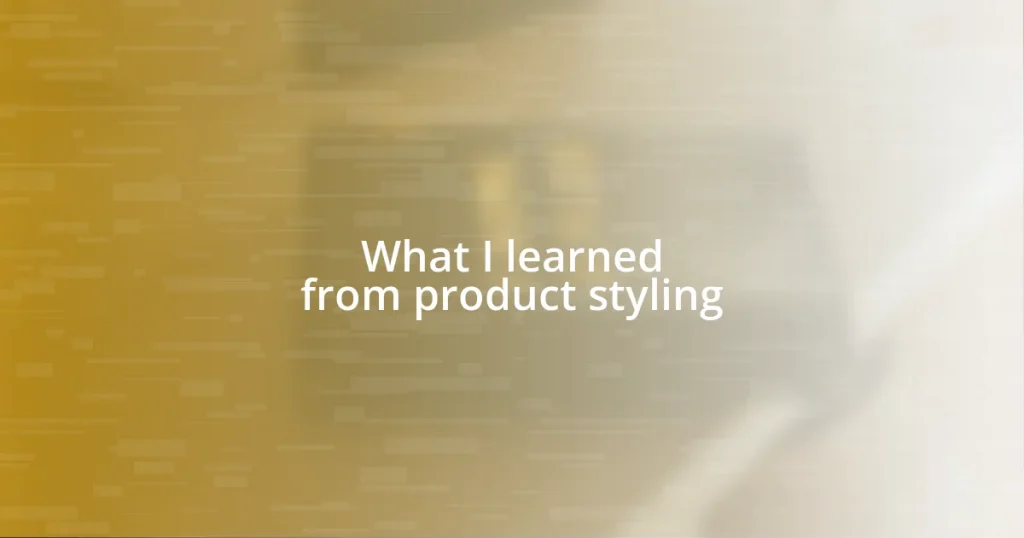Key takeaways:
- Understanding client needs goes beyond logistics; actively exploring their emotions and vision fosters deeper connections and informed planning.
- Building trust with clients involves transparency, consistent communication, and showcasing past successes, creating a partnership rather than a transaction.
- Following up post-event and gathering feedback enhances relationships and improves future planning, reinforcing the bond and fostering continuous collaboration.

Understanding Client Needs
Understanding what a client truly needs can feel like piecing together a puzzle. I remember meeting a client who was set on a grand wedding but seemed distant during our first conversation. It was only when I gently probed about their vision and feelings that they revealed concerns about their family dynamics—something that played a significant role in the event’s planning.
Sometimes, it’s not just about the logistics but the emotions tied to the event. Have you ever noticed how a simple question can unlock a deeper conversation? I once asked a corporate client what success looked like for them beyond just numbers. Their eyes lit up as they spoke about creating lasting memories with their team—which shifted our approach entirely.
Listening actively is more than just hearing words; it’s about tuning into feelings. In another instance, while discussing an upcoming product launch, I sensed hesitation in my client’s voice. By creating a safe space for them to express their anxieties, we could work through their concerns and ultimately design an event that truly represented their brand ethos. Understanding client needs is indeed a journey, and each conversation shapes the path we take together.

Building Trust and Credibility
Building trust and credibility with clients is crucial in my line of work. I recall one particular event where the client was apprehensive about working with someone new. To bridge that gap, I invited them to my office for a casual chat, showcasing previous projects and client testimonials. By sharing my experiences and demonstrating my commitment to delivering quality, I saw the tension melt away and was able to forge a stronger connection. It’s always about creating a sense of partnership rather than just a transactional relationship.
Trust is built through transparency and consistency. Here are a few strategies I use to establish it:
- Open Communication: I encourage clients to ask questions and share their thoughts throughout the process.
- Follow Through: I always meet my deadlines and ensure that what I promise is delivered on time and to a high standard.
- Showcase Experience: Sharing past successes with relatable case studies helps clients visualize our potential partnership.
- Be Honest: If challenges arise, I believe in addressing them head-on and involving the client in the solution.
- Testimonials and Referrals: Sharing glowing feedback from previous clients has proven invaluable, kindling a sense of trust in my abilities.
When clients feel confident in my dedication and integrity, the rapport strengthens, paving the way for an enjoyable and successful collaboration.

Effective Communication Techniques
Effective communication is the bedrock of rapport with event clients. I recall a time I was planning a milestone birthday party. The client was worried about every little detail, from the color scheme to the playlist. Instead of brushing their concerns aside, I took a moment to actively engage by restating their worries and asking for specific preferences. This not only validated their feelings but also created an open dialogue where they felt comfortable sharing their vision. It’s amazing how a little extra attention can transform uncertainty into excitement.
Another communication technique that has served me well is active listening. I remember a meeting where a client began talking about their upcoming gala, but their tone seemed anxious. By reflecting back what I heard and asking targeted questions, I discovered they felt overwhelmed by competing commitments. Acknowledging this helped us recalibrate our approach to prioritize elements they valued most. It’s during these moments of understanding that I feel the strongest connections with clients blossom.
Lastly, the clarity of my communication cannot be overstated. In one scenario with a corporate client, I realized that using jargon can create barriers, rather than bridges. I made it a point to simplify explanations about event logistics, ensuring they fully understood every step of the process. Seeing their relieved smile as everything clicked into place reminded me that being straightforward can make all the difference. Building rapport is ultimately about making clients feel seen, heard, and understood.
| Technique | Description |
|---|---|
| Engagement | Validate client concerns to foster open dialogue and share vision. |
| Active Listening | Reflect back client worries and ask questions to uncover deeper feelings. |
| Clarity | Simplify explanations to ensure full understanding and alleviate anxiety. |

Personalizing Your Approach
When personalizing my approach with clients, I like to dig deep into their preferences and tastes. For example, I remember one client who was passionate about art and wanted a gallery feel for their event. I took the time to curate every element—invitation designs, decor, and even the seating arrangements—around this theme. How satisfying is it to watch someone light up when you nail their vision? That’s the beauty of paying attention.
I also lean heavily on sharing relatable anecdotes that resonate with my clients. One time, I spoke with a couple planning their wedding who felt overwhelmed by trends they didn’t genuinely connect with. I shared a story of a couple I once worked with who chose a simple yet meaningful theme filled with personal touches—a picnic wedding that reflected their love for the outdoors. The smiles on their faces said it all; they felt seen and inspired to create a day that truly represented them. It’s these connections that make clients feel valued and understood.
Additionally, I find it tremendously beneficial to tailor my communication style to match the client’s personality. Recently, I worked with a corporate client who appreciated straightforwardness, preferring facts over fluff. I adjusted my presentations to be data-driven and concise, allowing them to grasp the information quickly. It felt rewarding when they expressed gratitude for making the process so seamless. After all, isn’t establishing rapport about catering to the unique needs of each client?

Active Listening Skills
Active listening is more than just hearing words; it’s about connecting with clients on a deeper level. I recall an instance during an initial consultation when a client mentioned their dream of an outdoor festival-style event. Instead of merely nodding along, I leaned in and asked them, “What does that dream look like for you?” Their eyes lit up as they articulated their vision, revealing not only their preferences but also their passion for creating a memorable experience. That moment reinforced the idea that listening attentively can transform a casual conversation into a meaningful exchange.
Engaging in active listening also involves being present in the moment and picking up on non-verbal cues. In another meeting, I noticed my client fidgeting as they shared their ideas. Sensing their unease, I paused and asked, “Is there anything specific that’s causing you stress about this?” They hesitated but then opened up about tight deadlines and family expectations. By nurturing that vulnerability, we turned a potentially overwhelming situation into a collaborative brainstorming session, easing their worries and setting a positive tone for our project together.
Finally, practicing active listening means reflecting back not just the words but the emotions behind them. I once worked with a couple planning their anniversary celebration who seemed excited yet apprehensive. I mirrored their emotions by saying, “It sounds like you’re both thrilled but also worried about making everything perfect.” The relief on their faces was palpable; they appreciated my understanding, which led to a more in-depth discussion about their priorities. It’s moments like these that highlight how effective active listening can lay the groundwork for trust and rapport with clients.

Following Up After Events
Following up after an event is a crucial step in maintaining the rapport I’ve built with my clients. After one particularly large corporate gala, I sent a personalized thank-you email that reflected on our collaboration. I mentioned the specific moments that stood out, like the laughter during the interactive sessions and the stunning floral arrangements that matched their brand colors. It’s amazing how a small gesture can not only express gratitude but also reignite the connection we formed throughout the planning process.
Sometimes, I like to include a quick feedback survey in my follow-up. I remember reaching out to a client after a three-day conference, asking what aspects they felt worked well and where there could be improvements. Their detailed responses helped me tweak my approach for future events, but more importantly, it showed them I genuinely valued their opinions. It’s not just about managing an event; it’s about building long-lasting relationships that can grow from constructive conversations.
Moreover, I often share post-event highlights on social media, tagging clients wherever appropriate. I recall a wedding I planned recently where I posted a collection of beautiful photos showing emotional moments—the couple’s first dance, the laughter shared among family members, and even the quirky photo booth antics. When the clients saw those images and expressed how they captured the spirit of their day, it reminded them that our work together resulted in something truly magical. It’s moments like these that reinforce the bond we’ve built, transforming clients into lifelong friends.

Gathering Feedback for Improvement
Gathering feedback is an insightful way to enhance my approach and meet my clients’ expectations more effectively. For example, after hosting a vibrant community festival, I sat down with the organizers to discuss what went right and what could be fine-tuned for next year. I asked, “What aspects did you feel energized by, and what left you feeling a bit drained?” Their candid discussions illuminated areas I hadn’t considered, highlighting the value of honest, open dialogue in our collaboration.
During one event, I set up a simple feedback wall, encouraging attendees to jot down their thoughts on sticky notes throughout the day. When I glanced at it during a quiet moment, I was struck by how genuinely invested people felt. One note stood out: “More food truck options needed!” It was a lightbulb moment; not only did it help me understand attendee preferences but it also made me realize how some small adjustments could lead to a significantly enhanced experience next time.
I’ve learned that requesting feedback doesn’t have to feel formal or intimidating. After a wedding I planned, I casually asked the couple over coffee, “What surprised you the most about the day?” They laughed and mentioned how the surprise flash mob added a unique touch. Their delight was infectious, and it underscored the importance of feedback not just for improvement, but also for celebrating the joy and creativity of each event. Engaging in these discussions not only enriches my future projects but also strengthens the connection I share with my clients.


